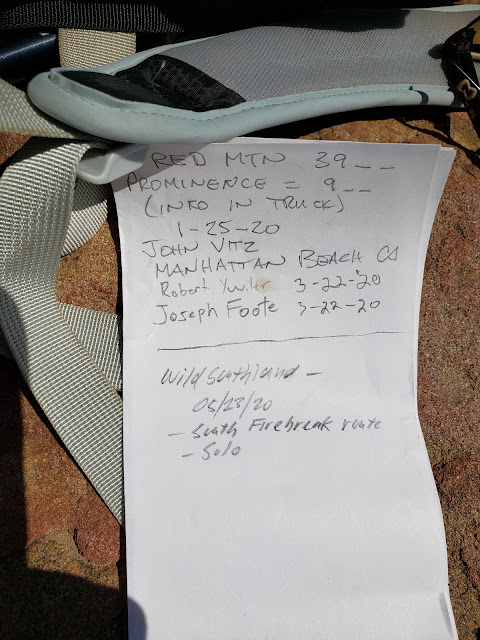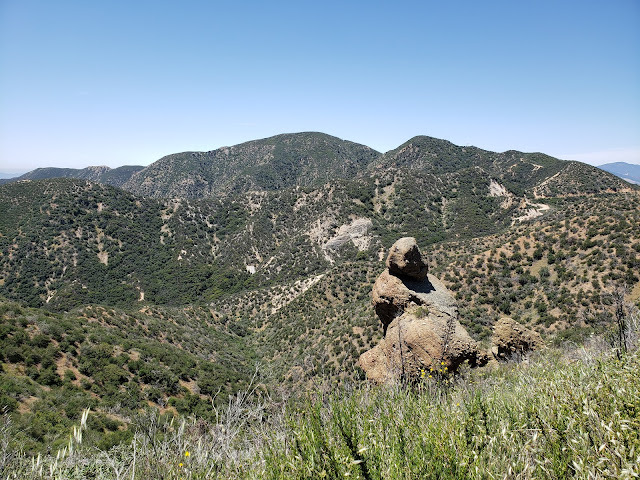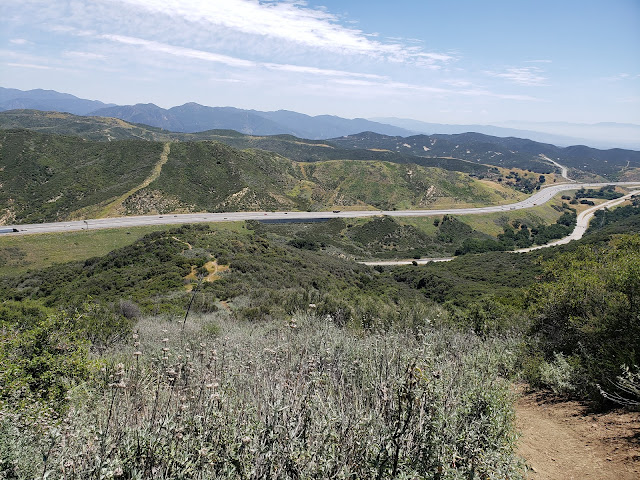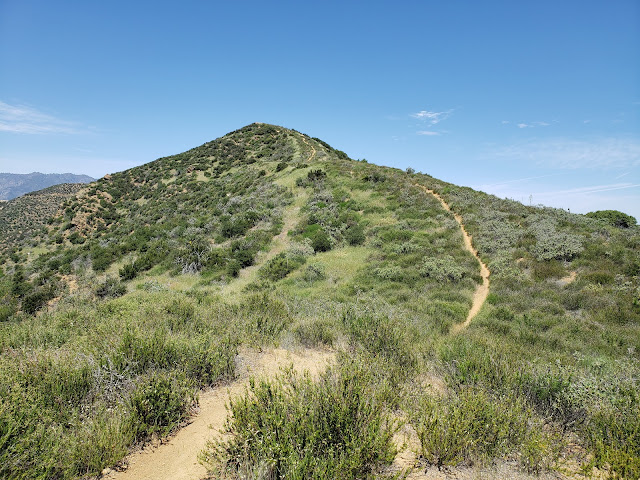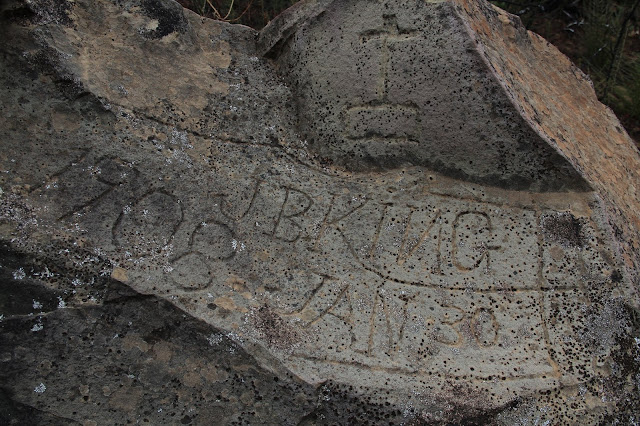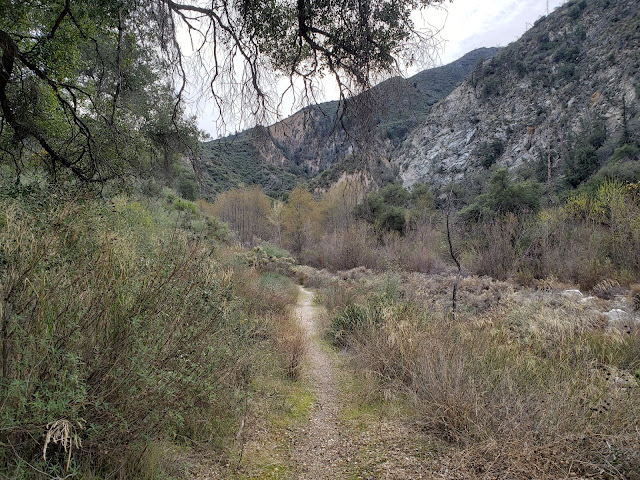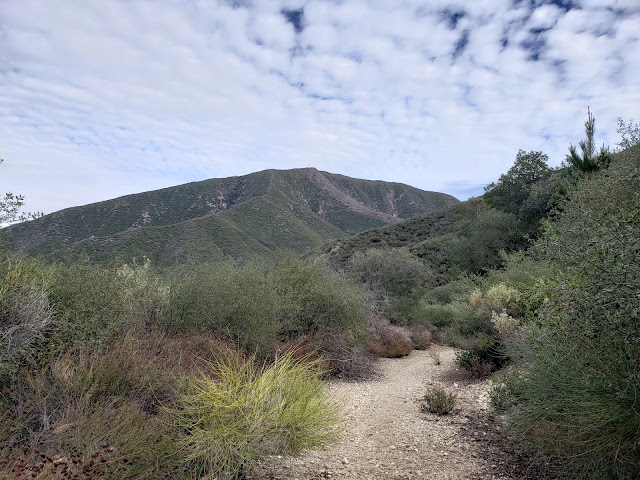Ursus arctos horribilis. The dangerous and frightening Grizzly Bear. It's hard to envision now, but back in the 1800s when Southern California's streams were still boiling with native trout, the land was flush with game, and taking a walk in the wilds really meant
taking a walk on the wild side, these behemoths freely roamed the local landscape. Not just one here and one there. Like everything else, they were here in large numbers. Estimates are that the mountains and forests of the Golden State once hosted up to 10,000 of these scary beasts.
In the backcountry of Ventura County, the North American Brown Bear was a regular fixture. And encounters with them were a common occurrence. Famed vaquero and bear hunter Ramon Ortega is reputed to have
once seen 100 plus grizzly bear while traveling between the Rancho Sespe and the San Buenaventura Mission in Ventura. He is also said to have killed three grizzlies on one August day in 1882 in Matilija Canyon. In 1873, a grizzly chased a husband, wife, and infant into a tree while they were soaking in the Matilija Hot Springs. Other stories about run-ins with "the Grizz" abound.
Settlers rightfully feared the grizzly. Cattlemen and sheep herders loathed it. Like their contemporaries, the cattlemen and sheep herders of yore liked grazing their herds and flocks on the public range. Paying for that privilege in the form of lost sheep and steers, not so much. So the grizzly was shot, trapped, and poisoned by those whose agenda it was to sanitize the backcountry and rid it once and for all of those things that make the wilds wild. By 1889, the grizzly had effectively and systematically been extirpated from the landscape.
Enter newspaper magnate William Randolph Hurst. Hurst had a reporter who worked for the
San Francisco Examiner named Allen Kelley. One day, Hurst decided that he wanted to see a famed Grizz before they vanished from California completely. So he contrived a cockamamie scheme to send Kelley off to Southern California to capture one of the fearsome animals and bring it back alive to San Francisco. The project was fueled in part by Hurst's curiosity but mostly by his avarice and desire for attention. Kelley had zero experience trapping bears, but that was far more experience than the rest of Hurst's men had, so he was assigned the task.
Kelley's search for a grizzly brought him to Ventura County. There, in June of 1889, he assembled an expedition comprised of roughly a dozen "knowledgeable" locals, a couple of Native Americans, and two gear-laden donkeys and headed for the hills. The quest began with much fanfare as the rag-tag crew marched down Telegraph Road and out of Santa Paula toward the Sespe.
Kelley's route into the deep Ventura backcountry took him up Tar Creek to Squaw Flat, over to the Stone Corral, down into the Alder Creek drainage, over to the Sespe Hot Springs, up the Johnston Ridge to Mutau Flat, through the Lockwood Valley, and ultimately onto the southern flanks of Mt. Pinos. There, Kelley and his boys spent the summer trying without success to coax a grizzly bear into one of a number of traps they had built.
This is where the tale get murky. And it gets murky because Kelley, a supposed journalist whose job it was to recounts events accurately and truthfully, instead wrought confusion and suspicion by telling two very different stories that call into question his veracity and make it virtually impossible to really know what happened next. One story appeared as a multi-page expose that Kelly penned for and that was published in the
San Francisco Examiner on November 3, 1889. The other story is the one he told many years later in a book he authored titled "Bears I Have Met - And Others" that was published in 1903. Both of these stories recount how Kelley ultimately captured the famous grizzly bear, now memorialized on the California state flag, known as "Monarch." But in the former story, Kelly claims Monarch was captured near Mt.Pinos in Ventura County. In the latter story, Kelly changed his tuned and asserted that he acquired Monarch from a "syndicate" that had captured the bear near Mt. Gleason in Los Angeles County.
Local Ventura County historian Charles Outland, author of the compelling read "
Mines, Murders, and Grizzlies: Tales of California's Ventura Back Country," contends that the yarn Kelley wove in his 1903 book was a complete fabrication. But that view is not unanimous. In his book "
The San Gabriels: The Mountain Country from Soledad Canyon to Lytle Creek," noted Southern California historian John Robinson, dismissed Outland's view as having "some support and a lot of conjecture." The Santa Clarita Valley Historical Society also apparently views Kelley's book as the last, authoritative word on the subject despite his previously published San Francisco Examiner article ("
Various internet sources say Monarch came from the Ojai area; this is incorrect, as Kelly himself tells us.").
It's easy to assume that provincialism and/or pride might be at work here. Outland was from Ventura County and Robinson was from Los Angeles County. So each may have been motivated, whether consciously or not, to see Kelley's stories through a particular lens. And each may have then interpreted the facts so as to arrive at a conclusion that was consistent with the outcome desired. I don't know. I never met Charles Outland. I did meet John Robinson once and asked him about Monarch. He was unyielding in his belief about where Monarch was captured. So that leaves us with the conflicting narratives that Kelley published and the discord those narratives have sown among historians. In light of that, both of the tales Kelley told about Monarch are worth examining.
The 1889 San Francisco Examiner Article
According to the
San Francisco Examiner article he penned, after getting skunked on Mt. Pinos, a clearly frustrated Kelley broke camp, "built several traps in the mountains near trails frequented by bears," and then changed locations to "the unsurveyed and unnamed peaks between Castac lake and the Liebre Mountains." That would have put Kelley and his troupe roughly in the northwest corner of Los Angeles County. Here, Kelley turned his attention for awhile to trying to capture a notorious grizzly that was known to frequent "General Beale's ranch" (known today as the Tejon Ranch) and to kill cattle with impunity and abandon.

Then, "one morning" (Kelley doesn't say when or exactly where they were), one of Kelley's men returned to camp to inform him that a dead steer had been found within 100 yards of an unfinished trap. All haste was then made to complete the trap in the belief that the murdering animal would return that night to finish off his meal. To that end, one of Kelley's men "rode out to Gorman's station to get some nails and honey, while the Correspondent (Kelley) paid a visit to one of General Beale's old corrals and stole some planks to make a door." Kelley then dragged the materials up the mountain to complete the trap, Just before dark, his man returned from Gorman station with honey and other provisions, but the hour was late so the trap could not be finished before darkness fell.
The next day, the trap was completed, but by some "ludicrous accident" it was destroyed thus guaranteeing that "a bruin would never be caught in it." Kelley's men then returned to Ventura, leaving him alone in the mountains, where he then had an exciting encounter with a grizzly, but still no success in capturing one.
In terms of trying to decipher where Kelley ultimately captured Monarch, this part of the story is key. This is what Kelley told his San Francisco Examiner readers next:
The bait scattered around this particular trap was ultimately discovered by four bruins, two of which were medium-sized, one of which was large, and the fourth which was enormous. As it turned out, the latter was not Monarch, but instead "Six-Toed Pete," a "cinnamon." However, a big grizzly soon also discovered this particular trap which Kelley tells us lead to a moonlight confrontation with Six-Toed Pete. The grizzly came out the victor and to him went he spoils that had been placed for him near the trap.
After his triumph, the big grizzly became less suspicious and cautious about approaching the bait Kelley and his men set out for him. Consequently, the bait was gradually moved closer to the trap door every day until finally a chunk of meat was placed on the trigger inside the trap. Then one morning, Kelley awoke to find that he had finally captured the massive grizzly bear known as Monarch. The precise location at which Monarch was captured was not included in Kelley's exciting newspaper narrative, but the headline pronounced:
He Was Trapped in Ventura County After a Terrific Struggle and Secured with Massive Iron Chains - It Was Hard Battle but Not a Man Was Hurt - The Long Journey Over Almost Impassable Mountains Before He Was Safely Landed in San Francisco - Getting Used to Captivity, but He Needs a Good Strong Cage All the Same
The "Bears I Have Met" Version
Fourteen years after he wrote the
Examiner article, Kelley published his book in which he included an account of how and where Monarch was captured. In this version of the story, Kelley says that after an unsuccessful summer spent on Mt. Pinos, Hearst became impatient and recalled him back to San Francisco. Kelley refused to return to the City by the Bay bearless, so Hearst fired him on the spot. Undeterred, Kelley terminated his useless helpers, discarded "all the advice that had been upon unloaded upon me by the able bear-liars of Ventura," and struck out on his own for "General Beale's range in the mountains west of Tehachepi and above Antelope Valley" where he attempted without success to trap the a cagey grizzly named "Pinto."
Then, in late October, Kelley became aware that a grizzly bear had been trapped by a "syndicate" on Mt. Gleason. So Kelley left Pinto to his own devices and traveled to the Mt. Gleason area where he met with a "Mexican" named Mateo and negotiated the purchase of the bear that became known as Monarch. Kelley then had a box built to house his bear and transported the beast to San Francisco where he sold it to Hearst who put it on display in Golden Gate Park. And the other story Kelley had told years earlier? He downplayed the conflicting narrative by dismissively claiming:
"The newspaper account of the capture of Monarch was elaborated to suit the exigencies of enterprising journalism, picturesque features were introduced where editorial judgment dictated, and mere facts, such as the name of the county in which the bear was caught, fell under the ban of a careless blue pencil and were distorted beyond recognition."
Are You Lying Now or Were You Lying Then?
Given the radically different tales Kelley told, it is fair to ask which one of them is true. Stated differently, one might ask whether Kelley was lying in 1889 or 1903.
Based upon the
San Francisco Examiner article, it's difficult to know exactly where in Ventura County Monarch was supposedly snared. The piece itself merely says that Monarch was finally apprehended on a mountain that was not infested with domesticated cattle and sheep and on which there were no acorns to forage. And this statement appears in the narrative while Kelley in admittedly in the Liebre Mountains near present-day Lebec. The only place in the article where Kelley explicitly states that Monarch was collared in Ventura County is in the headline. Not much to go on.
But the yarn Kelley wove in his book about Monarch's capture is even more problematic. First, 14 years passed after Kelley penned the
Examiner article before he decided to correct the record. That extended delay calls into question the truth of the "correction." On top of that, he had a book to sell. Rehashing the story he already had told wasn't going to help in that regard.
Second, Kelley's stated reason for the supposed inaccuracies in the
Examiner article are too flimsy to believe. Hearst was well known as a purveyor of yellow journalism, and it is not hard to imagine that he and his editors took some creative license with Kelley's story before it was published. But what possible "exigencies of enterprising journalism" were served by changing the name of the county where Monarch was captured from sexy Los Angeles County to backwater Ventura County? Particularly, since the expedition had spent its entire time in the latter county? The explanation just doesn't hold up under scrutiny.
Third, in his book, Kelley tells us that Hearst unceremoniously fired him after several unsuccessful months on Mt. Pinos when Kelley refused to terminate the search and return to San Francisco. Despite this, Kelley ventured forth on his own, spending several additional months tracking Monarch, purchasing him from the syndicate, transporting him to San Francisco, and then writing a detailed, multi-paged expose for Hearst and his publication about his exploits.Why would he do that if he had been fired? It simply isn't believable.
Lastly, the language Kelley used in his book is telling. It suggests that he was more motivated by grinding his axe and depriving Ventura County of notoriety than he was in actually telling the truth. The local men Kelley hired to assist in tracking and capturing a grizzly are dismissively described as "the able bear-liars of Ventura." Kelley bemoans the advice and recommendations he received from his "ingeneous, but sedentary" and "over-paid" assistant. The whole approach smacks of score-settling as opposed to objective and truthful reporting. And the "able-bear liars" slur that he leveled against the Venturans he hired is ironic given the fact that Kelley himself must have lied about the whole affair either in 1889 or in 1903.
So, what can be said of where Monarch was actually captured? There is certainly more resources available that can be consulted in an effort to ferret out the truth, but if those resources solved the mystery we would already know about it. But based solely on the
Examiner article, Kelley's book, and a few other articles, I don't know that anyone can authoritatively say whether Monarch was captured in Ventura County, Los Angeles County, or some other county (a newspaper entry from the Ventura Observer dated December 9, 1891 indicates that Monarch was actually captured in Kern County - see snip below). What can be said, with apologies to the late John Robinson and the Santa Clarita Valley Historical Society, is that the generally-accepted story that Monarch was captured in Los Angeles County near Mt. Gleason is dubious at best.








